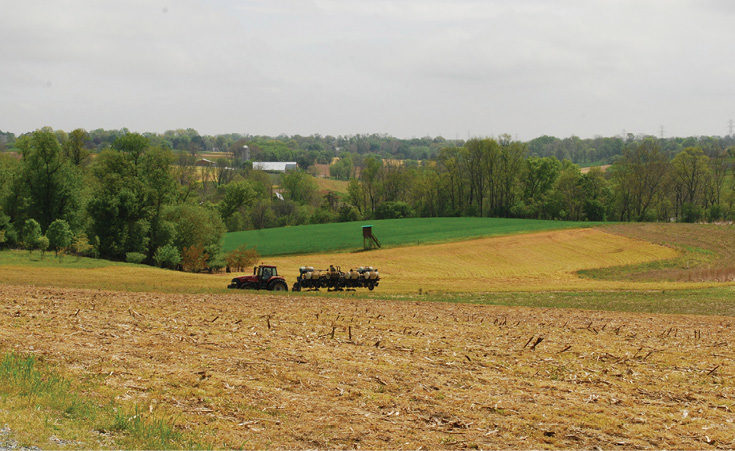No-Till Farmer
Get full access NOW to the most comprehensive, powerful and easy-to-use online resource for no-tillage practices. Just one good idea will pay for your subscription hundreds of times over.

Future View Farm owner Jeff Frey may have pursued no-till back in the early 1970s for its time-saving benefits. But the impact it had on his sloping eastern Pennsylvania fields was what drove him to go to no-till full-time in the 1980s.
“At that time, minimum till was a big conservation tool with the chisel and discing,” the Willow Street, Pa., no-tiller says. “That wasn’t adequate. We would get some heavy rains and we would see soil and soybean seeds washing down the road. I knew I had to do something different.”
With Frey practicing continuous no-till for more than 25 years, his fields — some with 20% slopes — see far less erosion. His highly variable soils, ranging from relatively light and sandy to rocky with limestone, are mellower, which Frey attributes to the natural tilling done by improved root mass and earthworms. His organic-matter levels have also increased slightly, currently measuring around 2.5%.
Frey is taking steps today to improve his no-till system by focusing on supplying adequate nutrients to the soil and crops, adjusting planter setups and implementing precision technology.
With about 600 acres of corn and 200 acres of soybeans, Frey also raises 4,000 finishing pigs and applies the manure from the pig operation to his fields.
Using a tanker spreader with flotation tires, he hauls the manure out of a neighboring digester and applies it almost every week, depending on the weather and land availability. He only hauls manure out of his finishing…